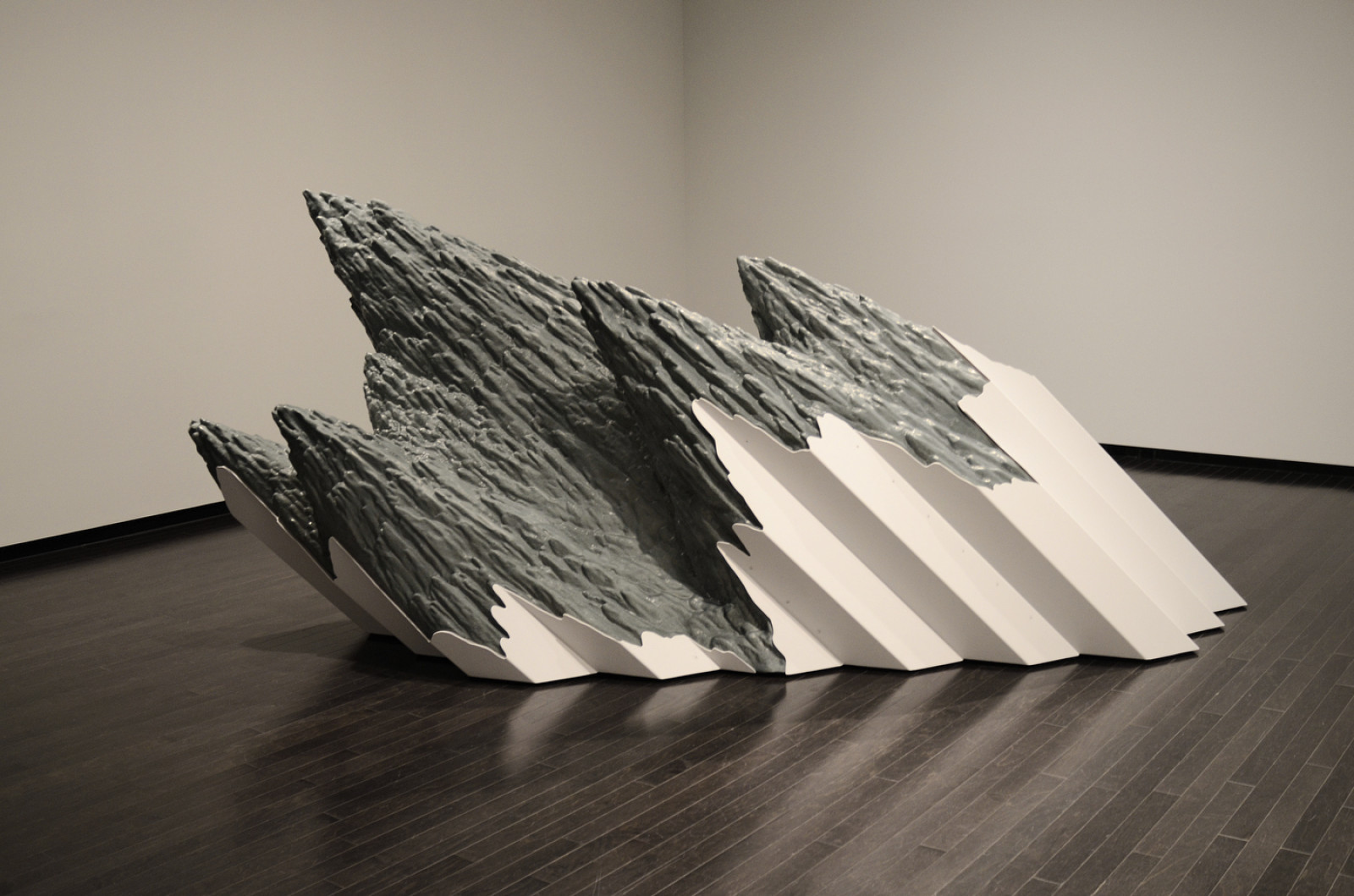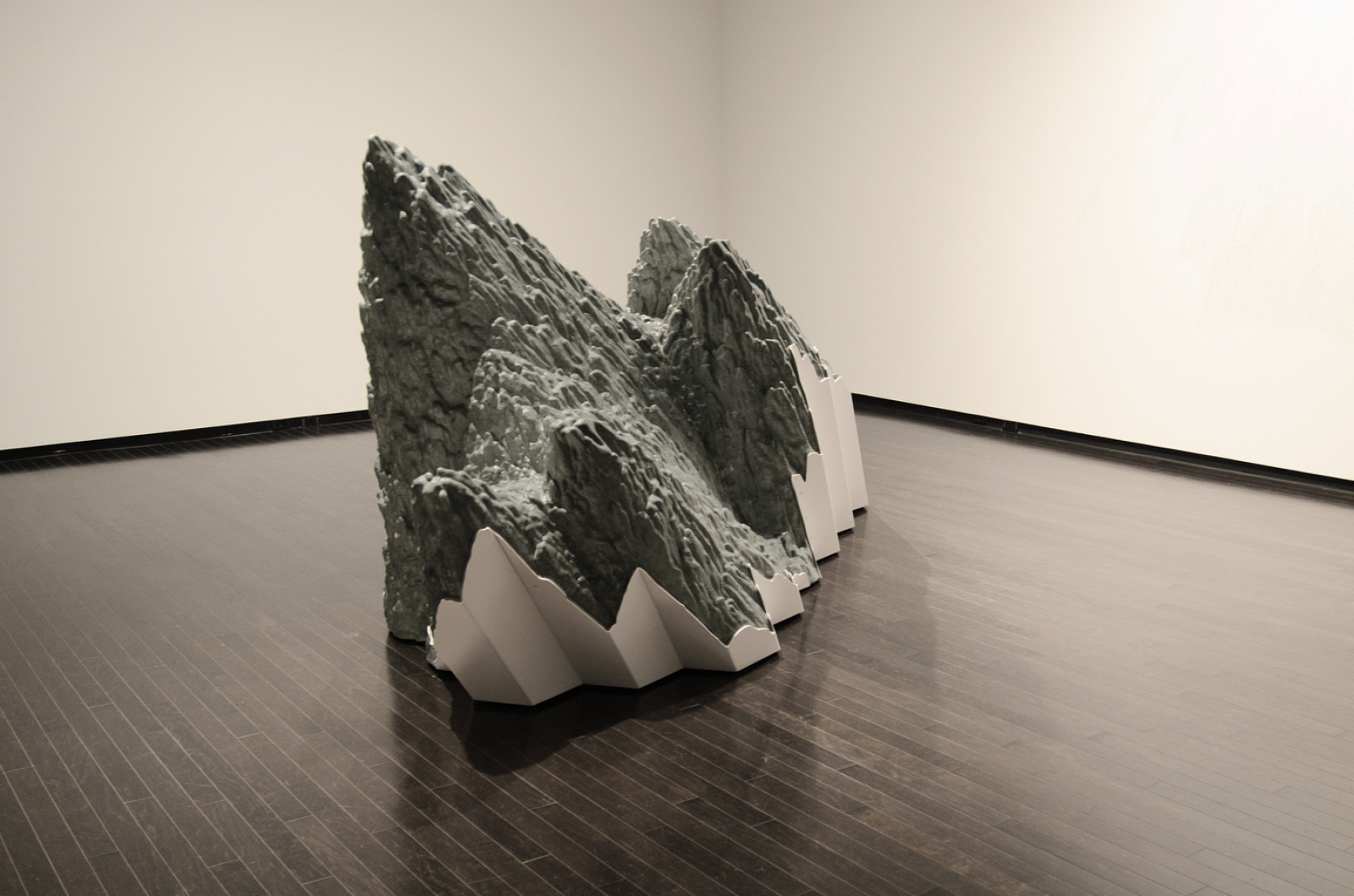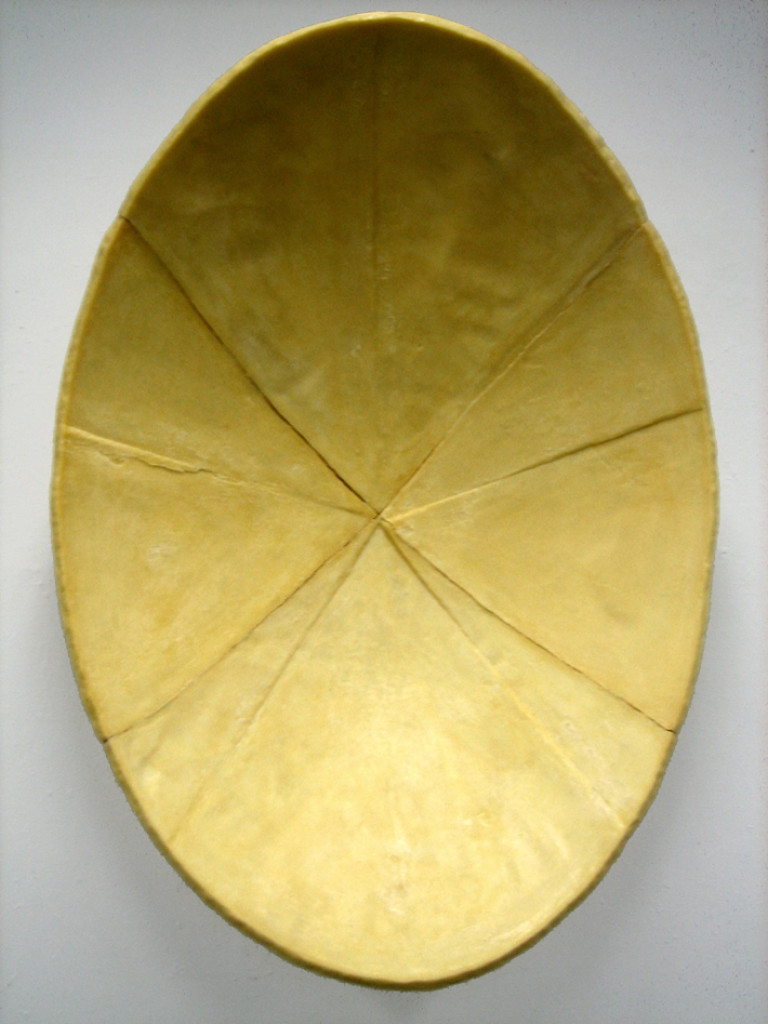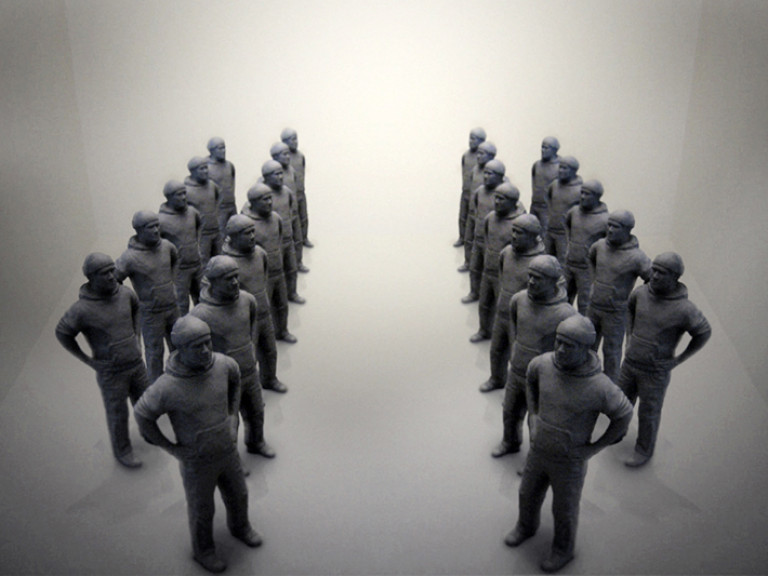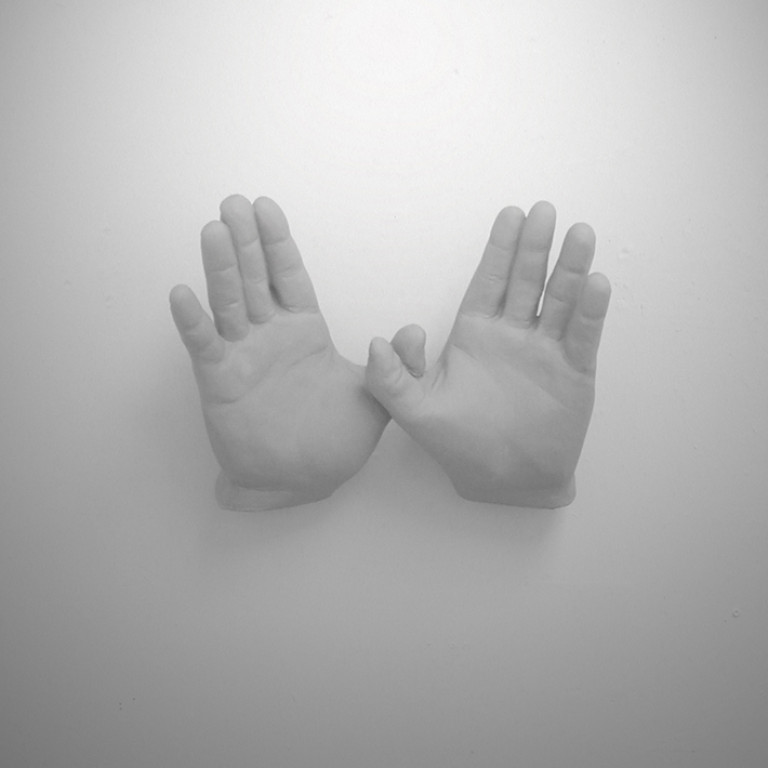Anthropocene
Anthropocene refers to the current geological age in which human behaviors constitute a geological force. Our collective capacity to change the environment renders nature a human construct; the natural parameters required for the existence of life are today subject to human activity. Anthropocene embodies the idea of a man-made nature.
Sculpted by using high-pressured water, natural-like formations are eroded out of foam. These formations are then cast in fiberglass, resulting in an ice-like mass that echoes the Arctic seen in The Sea of Ice (1824), Caspar David Friedrich’s iconic landscape painting. Friedrich’s work appeared at a time when Arctic exploration was still in its infancy.
Today, as the North Pole melts at an alarmingly fast rate, the Arctic draws human attention not as an unexplored frontier, but as an unexploited resource, with various nations, Canada included, vying to stake a claim. As Slavoj Žižek notes in Living in the End Times, we are encouraged to focus on the potential wealth of an ice-free Arctic so that we can remain blind to the crisis of global warming.
Image caption: Installation view during a solo exhibition of Anthropocene at the Alberta Art Gallery
